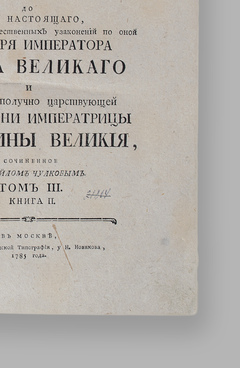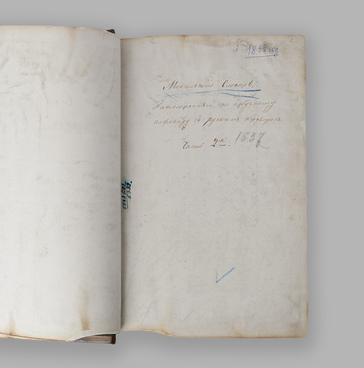The Kyakhta Tariff from the museum’s collection is a printed official document that was approved on November 28, 1841. It regulated the list of imported and exported goods, as well as import and export restrictions at the Kyakhta Customs. The document also indicated the customs duties to be levied depending on the quantity, weight, and price of goods.
The tariff prohibited the import of “all kinds of wine and vodka, all kinds of bread, all kinds of iron tools, livestock, salt, dyed leather, laminette yarn, braiding, lace, and other things.” In turn, it was forbidden to export “undressed leather, all kinds of firearms, gunpowder, and opium.”
In addition, the list of goods prohibited for import and export through the Kyakhta Customs also included “all Russian coins and banknotes, gold and silver in ingots or any foreign currency.”
This tariff established different duties on tea, depending on the variety, “Green, Lanzun, Holuntun, Chanko, and Beijing or pearl tea — 75 kopecks per pound; traditional green tea in paper bags and in bulk — 47 kopecks; bohea and wuyi black tea in chests and paper bags — 60 kopecks; stone-pressed tea — 10 kopecks; Luhan, tile tea, and any inferior sorts — 6 kopecks per pound.”
The note informed that “according to the tariff, all previously collected special fees are included in the duty, and only one duty is levied on all imported and exported goods as determined by the tariff. Also, a one-percent fee in favor of the Kyakhta trade is to be paid to the Customs together with the single duty, of which a special record should be kept.”
In his 1861 sketch
“Kyakhta” which was published by the Irkutsk Printing House of the Troops’
Headquarters, Ivan Noskov wrote,





